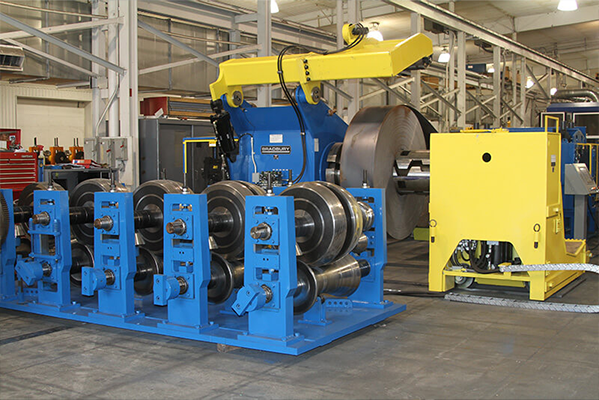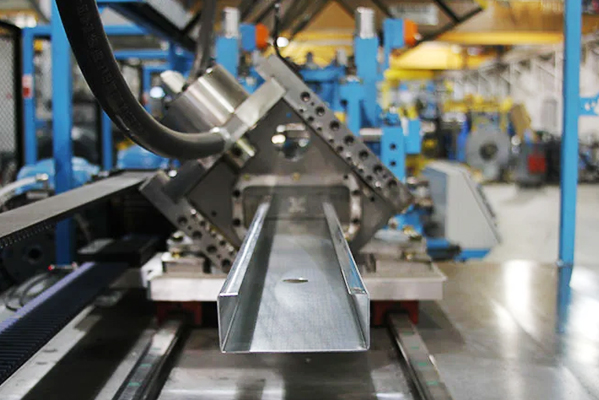Navigation Menu
Contact Us
- Email:
- info@wxavatar.com
- Address:
- Yurong Village, Yuqi Street, Huishan District, Wuxi, China.
Release Date:Apr 17, 2025 Visit:2 Source:Roll Forming Machine Factory
Roll forming is a highly efficient and versatile metal forming process used across various industries to produce continuous profiles with consistent cross-sections. This method involves passing a metal strip through a series of rollers that progressively shape the material into the desired form. Due to its precision, cost-effectiveness, and ability to handle high-volume production, roll forming has become a critical manufacturing technique. This article explores the key applications of roll forming in different industries.

1. Construction Industry
One of the most significant applications of roll forming is in the construction sector. The process is widely used to manufacture:
Roofing and Wall Panels – Roll-formed metal sheets are commonly used for roofing and cladding due to their durability and weather resistance.
Structural Components – Steel beams, purlins, and studs are often produced using roll forming to ensure uniformity and strength.
Window and Door Frames – Aluminum and steel frames are efficiently shaped using roll forming for precise dimensions.
The ability to produce long, continuous sections makes roll forming ideal for large-scale construction projects.
2. Automotive Industry
Roll forming plays a crucial role in automotive manufacturing, where precision and repeatability are essential. Key applications include:
Chassis and Frame Components – High-strength steel sections for vehicle frames are often roll-formed to meet strict safety standards.
Seat Tracks and Reinforcement Beams – These components require consistent shapes and high durability, making roll forming an optimal choice.
Exhaust Systems – Certain exhaust components are shaped using roll forming to achieve the required geometry.
The automotive industry benefits from the high-speed production capabilities of roll forming, which helps meet large-scale demand.
3. Appliances and Household Products
Many household and commercial appliances incorporate roll-formed parts, such as:
Refrigerator and Oven Panels – Metal casings for appliances are often produced using roll forming for a smooth, uniform finish.
Shelving and Storage Units – Roll-formed metal shelves provide strength and consistency for retail and industrial storage solutions.
HVAC Ducts and Vents – Heating, ventilation, and air conditioning systems use roll-formed ducts for efficient airflow management.
The process ensures that parts meet tight tolerances while maintaining cost efficiency.
4. Industrial and Machinery Components
Roll forming is widely used in industrial machinery and equipment manufacturing, including:
Conveyor Systems – Roll-formed tracks and guides ensure smooth operation in material handling systems.
Support Frames and Enclosures – Machine guards and structural supports are often fabricated using roll forming for consistency.
Agricultural Equipment – Components for tractors, harvesters, and other farming machinery benefit from the strength and precision of roll-formed parts.
5. Transportation and Infrastructure
Beyond automotive applications, roll forming is used in:
Railway Tracks and Components – Certain rail supports and brackets are manufactured using roll forming.
Trailer and Truck Body Panels – Commercial vehicles use roll-formed sections for lightweight yet durable structures.
Bridge and Highway Components – Guardrails and signage supports are often roll-formed for uniformity and ease of installation.

Conclusion
Roll forming is a vital manufacturing process with diverse applications across multiple industries. Its ability to produce high-precision, uniform metal profiles efficiently makes it indispensable in construction, automotive, appliance manufacturing, industrial machinery, and transportation. As manufacturing demands continue to evolve, roll forming remains a reliable and cost-effective solution for producing high-quality metal components.